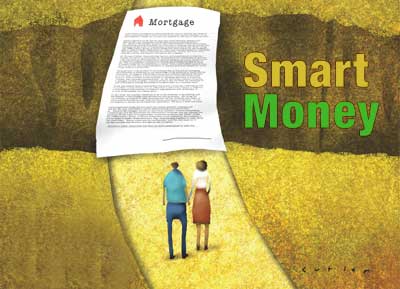 |
1. Choosing the Perfect Lender
As you begin contacting lenders, your first question should be whether they handle loans for log homes. Not all banks do. Assuming the lenders you contact meet this first requirement, ask about their appraisal process because it could affect your ability to get a loan. Lenders require an appraisal on your future home, which will ensure that its value is in sync with the amount of money that you're borrowing. Because your home doesn't yet exist, lenders determine its value by comparing your floor plan to comparable homes. Typically, this means they look at three homes of similar size and style. The comparable homes have to be within a five-mile radius of your home site, and they should have sold within six months of the date of your appraisal. "When interviewing banks, be sure to ask whether they consider only log homes as comparables," advises Mike Cole, assistant vice president of Pennsylvania-based M&T Mortgage's System Built Division. M&T and some other lenders take a broader approach and include all types of custom homes when developing comparisons. This can be important. If your lender looks only at log homes, that reduces the chance of finding true comparables, and the value of the log homes the lender picks may negatively affect your appraisal. Also, if a bank only considers log homes and none exist nearby, you won't be able to get a loan from that lender, and you'll have to start the process over with another company.
2. Qualifying for a Loan
Once you've identified a lender, it's the lender's turn to ask questions. Along with an application, the lender will ask you to provide two sets of documents. For the construction loan, you'll need to show details about the cost of your home. For the mortgage, you'll need evidence of your ability to repay the bank. Basically, the lender is trying to determine how good a risk you are. This is based on the loan-to-value amount (LTV), that is, the percent of the total price of the home that you're requesting. Depending on the lender, the amount you can borrow runs from 80 to 95 percent. You'll also need to verify your income and debts. Begin early by gathering W2 forms, tax returns and income statements. If you're what lenders call "asset heavy," rather than "income heavy," you'll need to document your investments in securities, mutual funds, cash in the bank or other assets.
3. Finalizing the Cost
To complete the appraisal and put a dollar amount on your construction loan, the lender will need detailed information about your building costs, over and above the cost of the log home package. You'll be asked to provide a set of your floorplans and specifications, along with thorough, credible cost estimates from trade contractors. If you own the land, you'll need a copy of the deed. If you're in the process of buying your property, you'll need its legal description and a copy of the sales agreement. To wrap up, begin the process by finding the right lender. This one decision could save you tens of thousands of dollars and is worth the same time investment you spend on finding the right log home producer or builder.






_11868_2024-09-17_08-44-256x288.avif)




